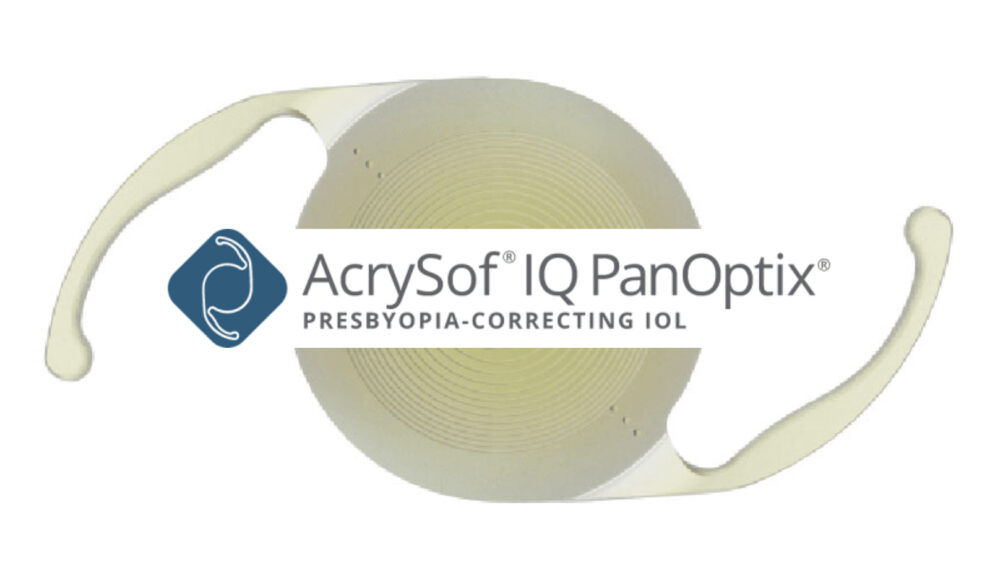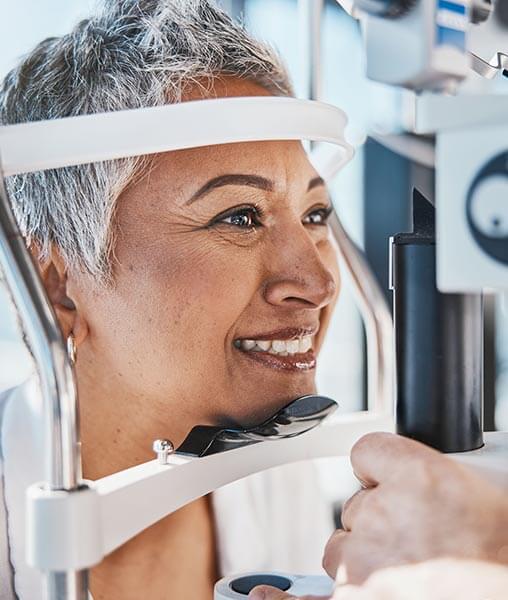Lens Options

What is the Intraocular Lens (IOL)?
During cataract surgery your old, cloudy lens is removed. But in order to allow you to see after the cataract is removed, your surgeon will implant a new lens called an intraocular lens. The lens is made of special plastics and will be able to focus light just like your old lens before it became foggy. There are different types of intraocular lenses, and your ophthalmologist will help you make the decision that makes the most sense for you and your lifestyle.
Types of IOLs
The Monofocal Intraocular Lens
The monofocal lens has the same curvature over the entire surface of the lens to provide clear vision at a single, focused point. This means that your surgeon can adjust the lens power needed to correct vision at either near or far distances. Many patients prefer to correct their vision for far distances so they can drive, watch TV comfortably, and participate in other activities without needing to depend on glasses. However, patients will still need reading glasses to be able to read close print or use a computer. Other patients prefer to correct their nearsightedness. This choice is dependent on your lifestyle and daily activities. The monofocal intraocular lens has been the standard choice of lens in various designs for over 40 years. Other lenses may lead to different visual results; however they are typically an added cost beyond that of the cataract surgery. Monofocal lenses are covered by Medicare and most other third-party payers.
The Multifocal Intraocular Lens
A multifocal intra-ocular lens (IOL) combines the strengths of optical principals used in microscopes and telescopes to provide clear vision at near, far, and intermediate distances. Similarly to the accommodating intraocular lens, this lens allows you to shift your focus to be able to see no matter what task you are trying to accomplish. The multifocal IOL operates through a series of tiny rings in the lens that work together to focus light for both near and distance vision. For most patients, a multifocal IOL delivers excellent near and distance vision, with good intermediate vision. This greatly reduces your need for glasses. Clinical trials have shown there is also a chance you may see halos or rings around lights. Over time, most patients grow accustomed to this and cease to notice them, while a small percentage can continue to see them long after surgery. Multifocal Intraocular Lenses are the most popular choice and we find create the best results and happiest patients.
ReSTOR®

If you’re seeking as much freedom from glasses as possible, the AcrySof® IQ ReSTOR® multifocal IOL may be the best choice for you. Dr. Schultze was the first surgeon in upstate New York to perform and perfect this surgery. The ReSTOR lens gives you the best opportunity for improved image quality at a full range of vision—near, far and everything in between—with increased independence from glasses or bifocals. The results of the AcrySof® IQ ReSTOR® IOL clinical trials have indicated that there is a slightly greater chance of experiencing glare and halos around lights when compared to a traditional monofocal IOL. However, over time you may grow accustomed to these disturbances and cease to notice them. If freedom from glasses is your priority after cataract surgery, then these lenses are a wonderful option for you. Although not all IOLs provide a full range of vision like the AcrySof® IQ ReSTOR® IOL, there are instances when a monofocal lens may offer more desirable outcomes for certain patients. For these situations, Alcon offers the AcrySof® IQ IOL. Both the AcrySof® IQ IOL and the AcrySof® IQ ReSTOR® IOL can restore your vision following cataract surgery or clear lens extraction while offering the enhanced image quality of an aspheric optic.
TECNIS®
Unlike conventional single-vision (monofocal) lens implants, TECNIS® Multifocal Lens provides patients with high-quality vision at any distance, and in any light condition—even in low light. After receiving this lens you will be able to see anything at any time, be it near, far or in between. You will no longer have to settle for monofocal lenses that only provide good distance vision, but with limited ability to see objects that are near without glasses. Similarly to the AcrySof® IQ ReSTOR® IOL, the results of the TECNIS® Multifocal Lens clinical trials have indicated that there is a slightly greater chance of experiencing glare and halos around lights, when compared to a traditional monofocal IOL. Again, you will likely cease to notice these halos over time. The advanced TECNIS® Multifocal is an implantable lens that restores vision after cataract surgery and corrects presbyopia (the need for reading glasses). It delivers results superior to those of a standard lens implant and offers an excellent chance to become completely free of spectacles.
Toric Intraocular Lens for Astigmatism
Many people have to rely on glasses to correct their astigmatism, which is a common optical condition that occurs with an irregularly shaped cornea. Eyes without astigmatism are round, while eyes with astigmatism are more oval shaped. This causes blurred or distorted vision, glare and ocular fatigue. The oval shape of an eye with astigmatism causes light rays to focus on two points in the back of the eye, instead of just one. Typically those with an existing corneal astigmatism have to rely on glasses, but a Toric intraocular lens implant corrects the astigmatism. After receiving a Toric lens implant, you will be much more independent from your glasses. This IOL is placed in the eye at a precise location in order to reduce or eliminate corneal astigmatism, which will correct vision at a distance. Patients with a Toric IOL may still need to wear glasses for tasks such as reading or working on the computer, but their quality of life is greatly improved by not needing glasses to drive or perform other daily tasks.
The Accommodating Intraocular Lens
If you would like to be able to see a continuous range of near, intermediate, and far distances, the Crystalens® is the only accommodative lens like this approved by the FDA. It mimics the eye’s natural process of accommodation and helps to lessen your dependence on corrective lenses. The Crystalens has a hinge that allows the optic to move within the eye, therefore changing the focal point as you focus on different distances. The ciliary muscle is located within the eye and works with the Crystalens optic to move it forward when needed to adjust for mid-range and near vision. When you want to see at farther distances, this muscle relaxes and the lens moves backward to correct for the focus. After having the Crystalens implanted, you will be required to undergo a visual rehabilitation program to help the ciliary muscle regain the far-to-near focusing power. Immediately after surgery you will have good vision at distances, but the intermediate and near vision will require the visual training. This program will begin after the first week of surgery and continue for up to six months. Near vision often continues to improve up to a year after surgery. There is also a new version called the Trulign™ Toric that can treat those with astigmatism who also want a greater range of vision after cataract surgery. It is important to note that an enhancement may be necessary to fine-tune distance vision and that this lens doesn’t always correct vision at all distances. Reading glasses may still be needed for some tasks. While there is a longer recovery time for this accommodating lens, being able to see at various distances can improve your life if you are very active and constantly doing activities where seeing near and far is necessary. You will greatly lessen your dependence on glasses by choosing this lens.
The PANOPTIX Lens

We are so excited to announce that we will now be offering a new ocular lens option to all of our cataract surgery patients! To learn more about the benefits of the PANOPTIX lens, call our office today at 518.475.1515 today!

